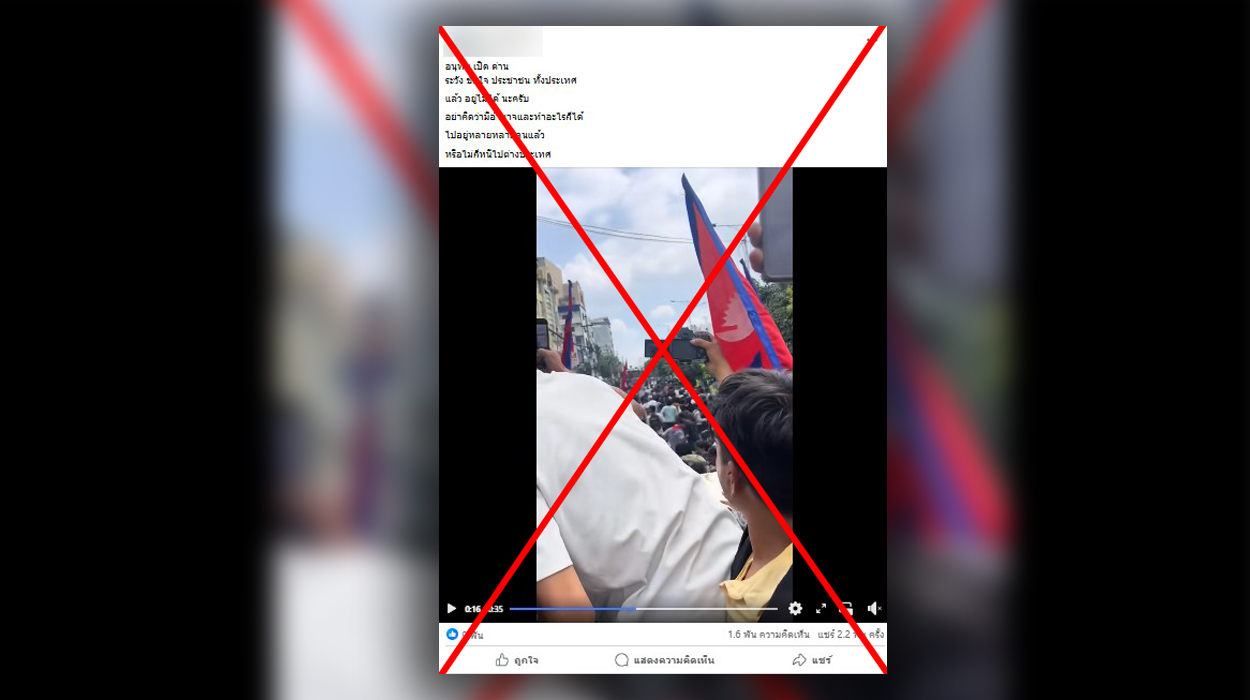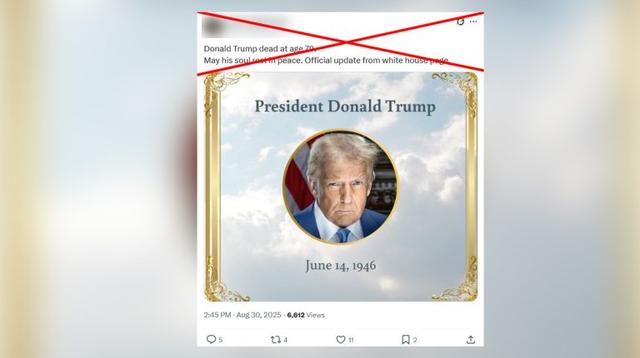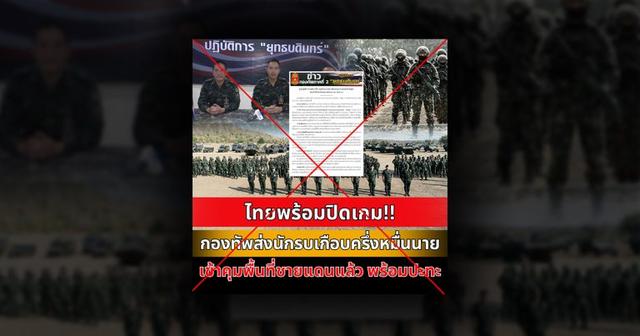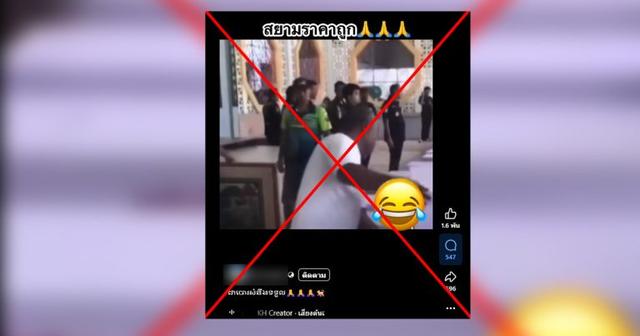Thai PBS Verify traced the source of this false information from Facebook.
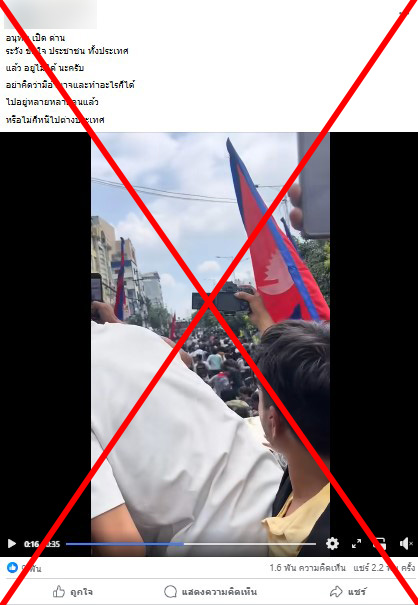
An image shows the Facebook account “Nhom Buriram” sharing a video clip with the claim that Thai people were dissatisfied with Anutin Charnvirakul opening the Thai-Cambodian border.
A Facebook page named “Nhom Buriram” shared a Reel showing large crowds on the street, with a caption stating: “Anutin opened the border 1 — beware of angering the entire nation. You can’t just do whatever you want because you hold power.” The clip received 9,000 reactions, 1,600 comments, and was shared more than 2,200 times. Some comments revealed misunderstandings, with users believing it showed Thais protesting after Anutin Charnvirakul opened the Thai–Cambodian border.
Using image verification tools
When Thai PBS Verify checked with Google Lens , it was found that the Reel posted by the account “Nhom Buriram” on September 10, 2025, matched a clip of the Nepal protest that had been posted earlier on September 8. It was not an incident of Cambodia protesting against Thailand.
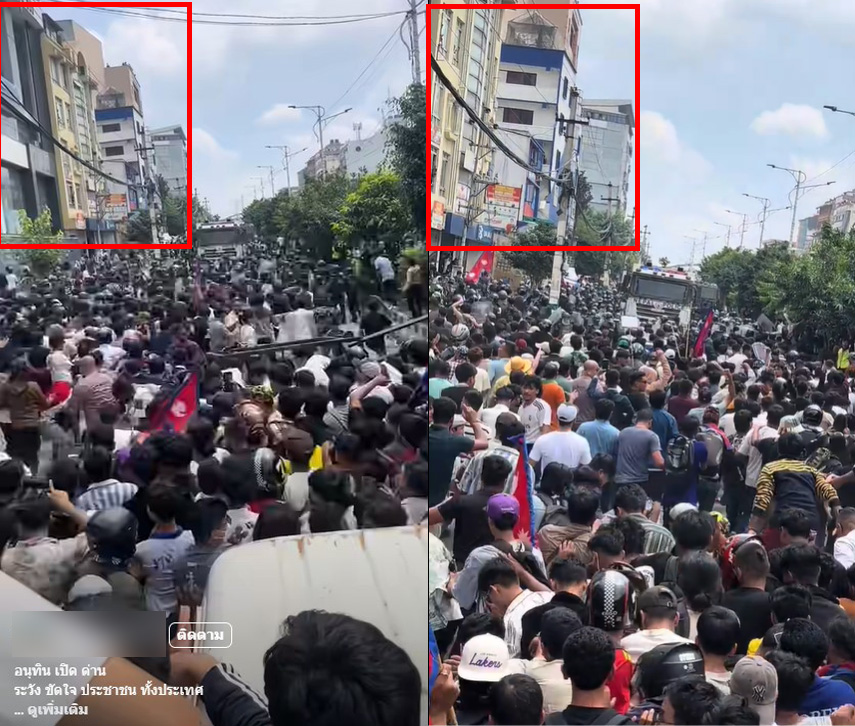
A comparison image shows the clip from the Facebook account “Nhom Buriram” (left) alongside the clip of the Nepal protest (right).
Verification via Google Maps
Thai PBS Verify then used the images from the clip to search the location on Google Maps and found that the area is in Kathmandu, Nepal.
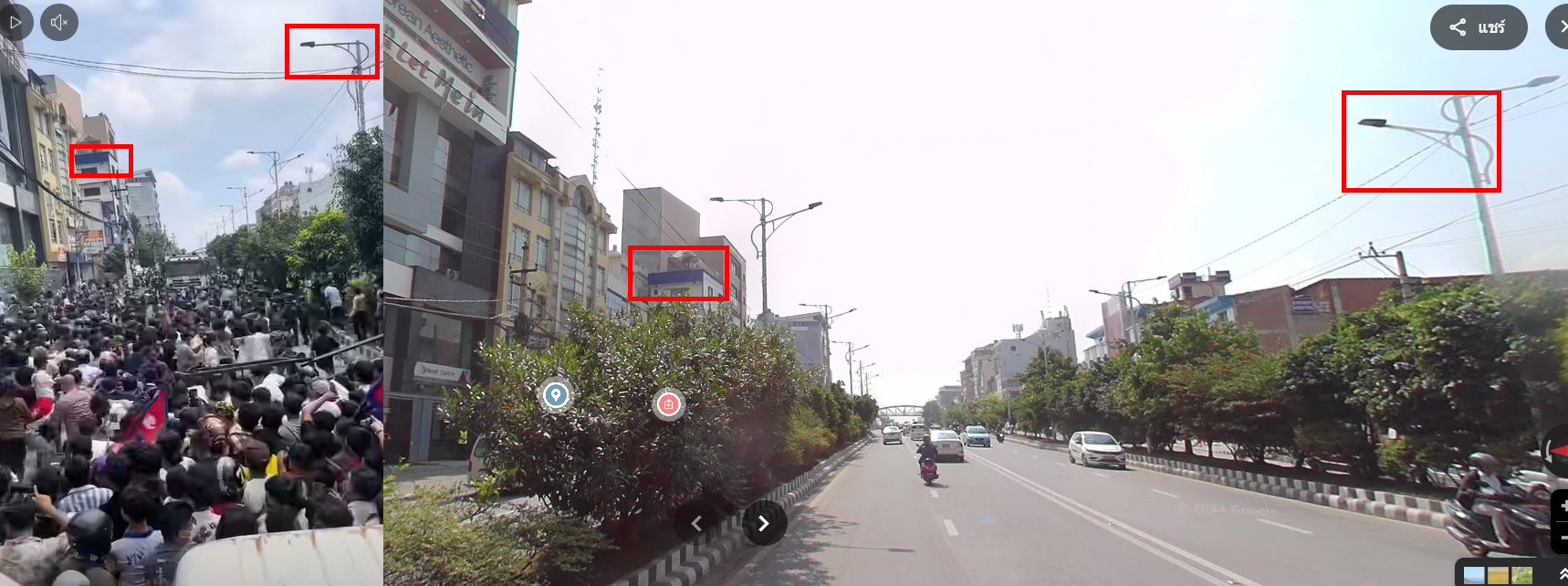
A comparison image shows the location in the clip alongside Madan Bhandari Road in Kathmandu, Nepal.
A map showing the actual location featured in the clip.
Anutin denies opening Thai–Cambodian border
Anutin Charnvirakul , leader of the Bhumjaithai Party, denied the rumors about reopening the Thai–Cambodian border, stressing that it cannot yet be carried out and must wait until the new government officially takes office.
Regarding opposition from the 2nd Army Region commander and the Army spokesperson—who expressed concern that reopening could benefit gambling dens and scam gangs—Anutin affirmed that the border cannot be opened immediately. He noted that negotiations and agreements on several issues must first be reached, and at present, he has neither the authority to issue orders nor any related policy.
What is the truth?
Thai PBS Verify has confirmed that this is fake news. The clip allegedly showing Anutin Charnvirakul involved in reopening the Thai–Cambodian border is in fact footage of protests in Nepal, where citizens rallied against the government’s ban on 26 social media platforms.
